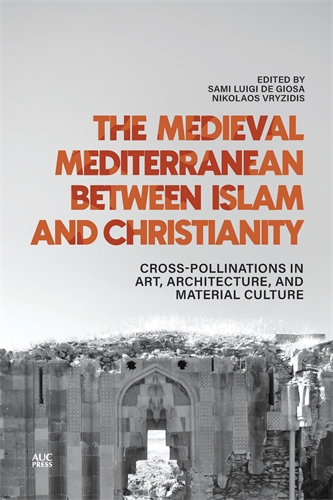By Faruk Bilici (INALCO), Hélène Fragaki (University of Augsburg), 2025.
Invitation to the virtual book launch on June 24, 2025: Webinar Registration – Zoom
In The Medieval Mediterranean between Islam and Christianity Crosspollinations in Art, Architecture, and Material Culture, AUC Press, edited by Sami Luigi De Giosa (University of Sharjah) and Nikolaos Vryzidis (Aristotle University of Thessaloniki), 2025.
URL: https://aucpress.com/9781649031877/
Description
Christian–Islamic encounters through religious arts, architecture, and material culture in the medieval era
The coexistence of Christianity and Islam in the medieval Mediterranean led to an interchange of knowledge in architecture and material culture that went well beyond religious and geographical boundaries. The use of Islamic objects in Christian contexts, the conversion of churches into mosques, and the mobility of craftsmen are only some manifestations of this process. From crosses found in mosques to European-Christian coins with pseudo-shahada inscriptions, medieval material culture is rich with visual evidence of the two faiths intermingling in both individual objects and monuments.
In this volume, thirteen international scholars explore various aspects of pan-Mediterranean Christian-Islamic encounters in material culture and art, from textiles to precious oils, and from metalwork to ceramics, covering most of the Mediterranean, as well as parts of its extended hinterland, from Spain and Italy to Egypt and Georgia.
Within this frame, one of the most relevant, yet underexplored lines of investigation is that of the “aesthetic space,” the notion that aesthetic pleasure transcends boundaries, paving the way to a cross-religious experience and appreciation. “Indeed, God is beautiful, and He loves beauty,” as mentioned in a Hadith narration, a universal cry of visual beauty that resonates with all cultures and civilizations.

